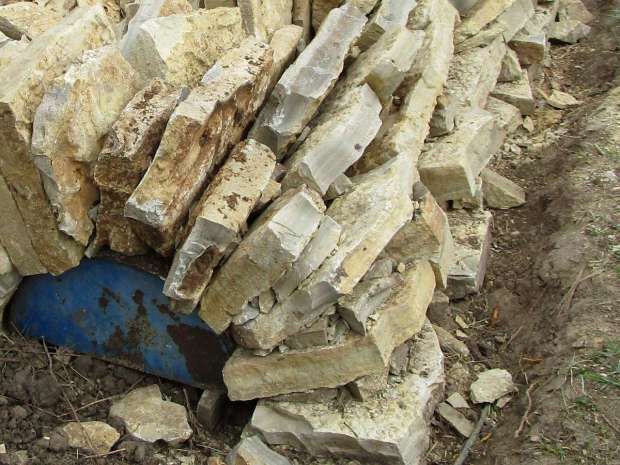Just because a stone arch bridge does not use mortar does not mean that it is weak. After all, a true stone arch bridge of any kind relies on compression between the stones to hold the structure together and to carry loads. In other words, the arch functions as a system in compression in order to carry weight; for more details in how this works, please see Improving a Stone Arch Bridge’s Serviceability by Strengthening: Part 1. Mortar “sticking” things together is not an important component in arch bridge functionality.
So… What Does the Mortar Do?
Mortar serves two main functions in a stone bridge. First, it helps keep the stones from vibrating loose. However, its primary function is to help equalize the pressure between stones. So, for instance, if two stones in the arch do not fit perfectly, the mortar will fill in the voids, allowing for maximum friction and contact between stones. Especially in large bridges using rough-fitting stones, this feature of mortar will prove beneficial. After all, the high compressive pressure within the arch can crack and break stones if there are gaps between them. These gaps actually form areas of tensile forces within the arch, as the arch stones will need to act like miniature slab bridges in order to carry weight over these gaps. Stone, being weak in tension, can succumb to such pressure if it is high enough. Thus, mortar helps compensate for irregularities in the stonework, ensuring that there is an even distribution of compressive pressure.
But if the Stones Fit Well…
If the stones in the arch fit together well, mortar is not required at all. The good contact between stones is enough to create a stable bridge structure. After all, the key to a stable stone arch bridge is to ensure that the weight of the bridge and the weight of any loads on the bridge are routed through the arch to the ground in such a way that the arch is operating entirely under compression. There is no need for anything to “stick” the arch stones together; the arch stones, if the arch is under compression, will be pressed together tightly, thereby holding everything together.

Compression is the secret behind a stone arch bridge, for compression will hold the stones tightly together, allowing the mass of individual, relatively small stones in an arch to collectively span the largest gaps.
In Practice…
In practice, the arch stones do not necessarily need to fit perfectly, even if the bridge is made without mortar.

A good fit between stones may have some small gaps, but these gaps, being small, will actually have very little tension across them. Stone can, after all, handle some tension. Of course, the better the fit the stronger the bridge, but, practically speaking, it will be found that how perfectly the stones in a stone arch bridge need to fit together is primarily dependent on the span of the bridge. A tiny bridge span will operate at very low pressure, while a 100-foot-span monolith will have enormous forces within the arch. The higher the pressure the more likely stones are to break if there are any tensile forces. All that said, the pressure within the arch can be reduced by making the arch ring thicker. Thus, thicker arches can be used to compensate for imperfections within the arch. And even a DIY mortarless bridge can be built to accommodate some serious loads.

That is why in mortarless builds, extensive use of shims between stones can prove invaluable. Though every individual small shim between the stones may not contribute much towards the strength of the bridge, the shims acting all together can greatly reduce the size and quantities of the gaps between the stones, creating a strong, durable bridge that will stand the test of time.

